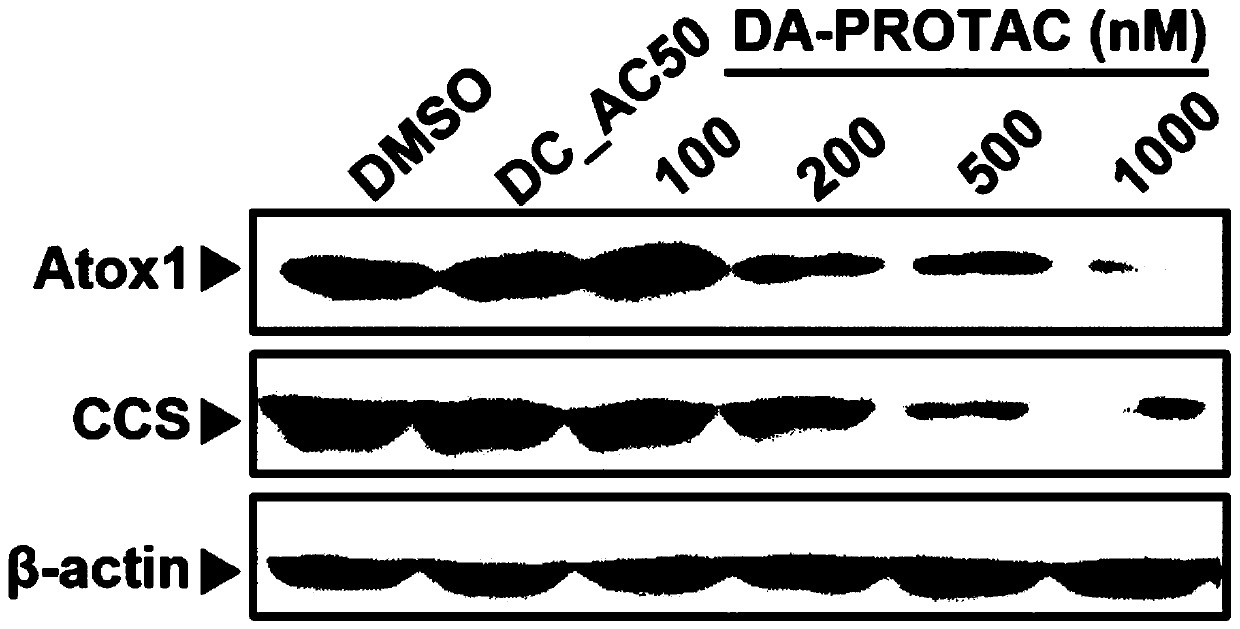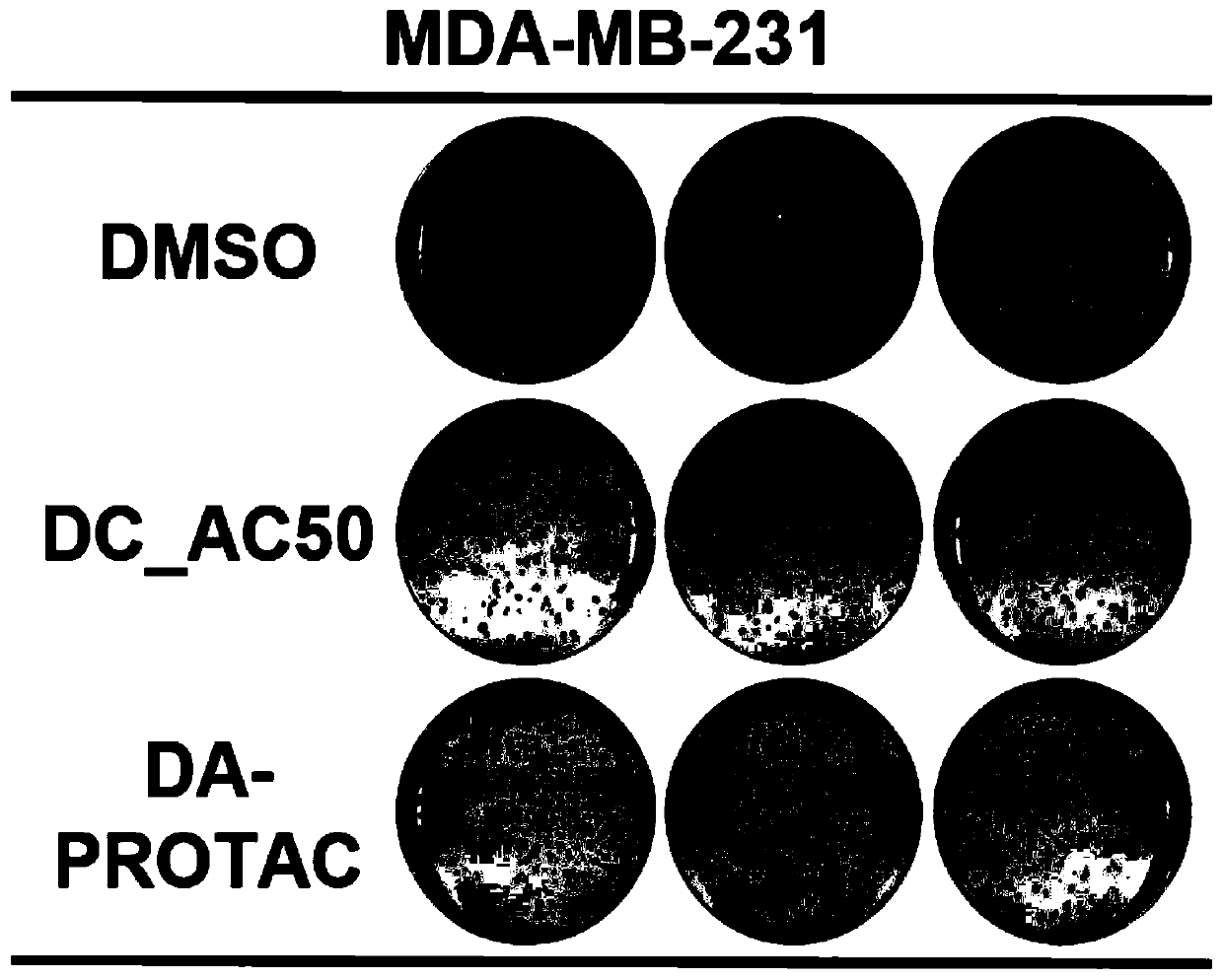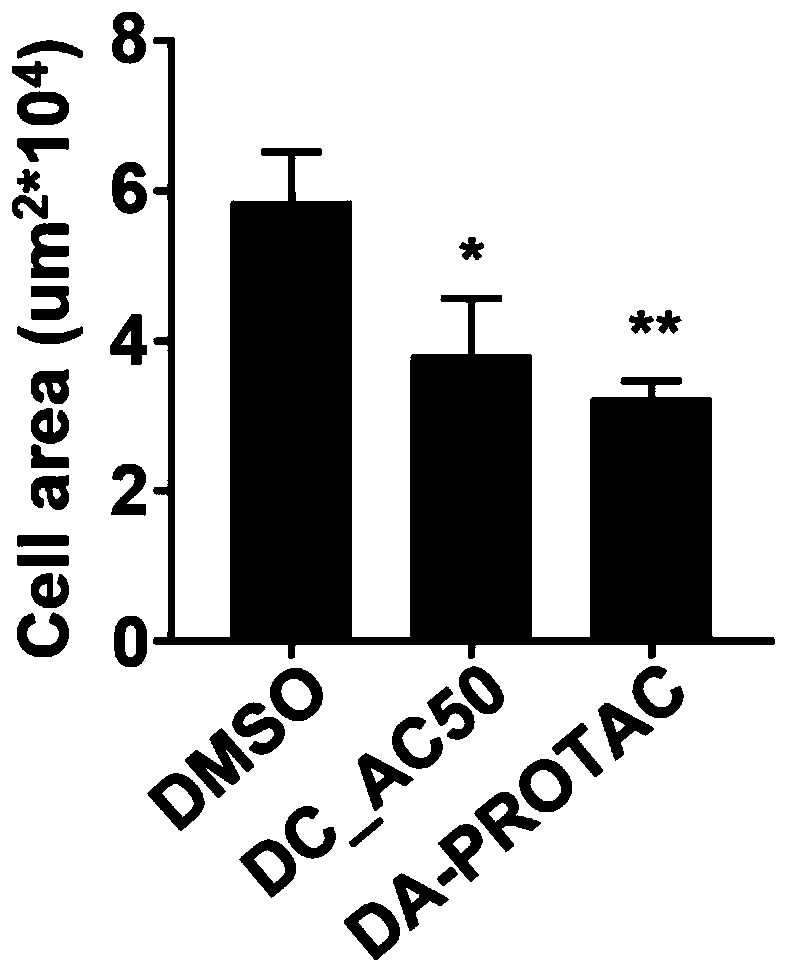Small-molecule inhibitor for degrading copper ion transport proteins Atox1 and CCS and application thereof
A small molecule inhibitor and transporter technology, which can be used in medical preparations containing active ingredients, organic active ingredients, organic chemistry, etc.
- Summary
- Abstract
- Description
- Claims
- Application Information
AI Technical Summary
Problems solved by technology
Method used
Image
Examples
preparation example Construction
[0044] A method for synthesizing a small-molecule inhibitor that specifically targets and degrades copper transporters Atox1 and CCS in triple-negative breast cancer cells according to the present invention, the steps are as follows:
[0045] Step 1: Synthesis of Intermediates
[0046] Add the degradation module in dichloromethane, add the linker, acid amine condensation reagent HATU and diisopropylethylamine at 0°C, and stir the reaction mixture at 20°C for 12 hours. After the reaction, use petroleum ether Purify the reaction mixture with ethyl acetate 1:3 mixed reagent to obtain the desired intermediate product;
[0047] Step 2: Synthesis of DA-PROTAC
[0048] The intermediate product was added in dichloromethane, and the targeting module, acid amine condensation reagent HATU and diisopropylethylamine were added at 0°C, and the reaction mixture was stirred at 20°C for 12 hours. Water 1:4 mixed reagents were used to purify the reaction mixture to obtain the final product DA...
experiment example 1
[0054] Experimental example 1, the application of DA-PROTAC in degrading Atox1 and CCS protein
[0055] will be 8×10 5 The MDA-MB-231 cells were inoculated in 6cm culture dishes and cultured with DMEM medium containing 10% FBS to obtain the MDA-MB-231 cell culture system. Add equal volumes of DMSO, DC_AC50 and different concentrations (100nM, 200nM, 500nM, 1000nM) of DA-PROTAC to the MDA-MB-231 cell culture system, and use western blotting to detect intracellular ATOX1 and CCS after 24 hours of treatment Level.
[0056] the result shows( figure 1 ): Under 200nM DA-PROTAC treatment, the protein levels of ATOX1 and CCS were significantly reduced. It shows that DA-PROTAC can degrade ATOX1 and CCS protein.
experiment example 2
[0057] Experimental Example 2. Application of DA-PROTAC in inhibiting the proliferation, migration and tumorigenesis of triple-negative breast cancer cells (MDA-MB-231).
[0058] 1. Application of DA-PROTAC in regulating tumor cell proliferation and migration
[0059] 1. The effect of DA-PROTAC on the proliferation ability of tumor cells
[0060] (1) MDA-MB-231 cells were inoculated into 6-well plates, 500 cells were inoculated in each well, and cultured in DMEM medium containing 10% (volume fraction) FBS to obtain the MDA-MB-231 cell culture system.
[0061] (2) Cells were treated according to the following treatment groups:
[0062] Treatment group 1 (DMSO): an equal volume of DMSO was added to the MDA-MB-231 cell culture system.
[0063] Treatment group 2 (DC_AC50): Add an equal volume of DC_AC50 (the solvent is DMSO) to the MDA-MB-231 cell culture system, so that the concentration of DC_AC50 in the cell culture system is 5 μM.
[0064] Treatment group 3 (DA-PROTAC): Add...
PUM
 Login to View More
Login to View More Abstract
Description
Claims
Application Information
 Login to View More
Login to View More - R&D
- Intellectual Property
- Life Sciences
- Materials
- Tech Scout
- Unparalleled Data Quality
- Higher Quality Content
- 60% Fewer Hallucinations
Browse by: Latest US Patents, China's latest patents, Technical Efficacy Thesaurus, Application Domain, Technology Topic, Popular Technical Reports.
© 2025 PatSnap. All rights reserved.Legal|Privacy policy|Modern Slavery Act Transparency Statement|Sitemap|About US| Contact US: help@patsnap.com



